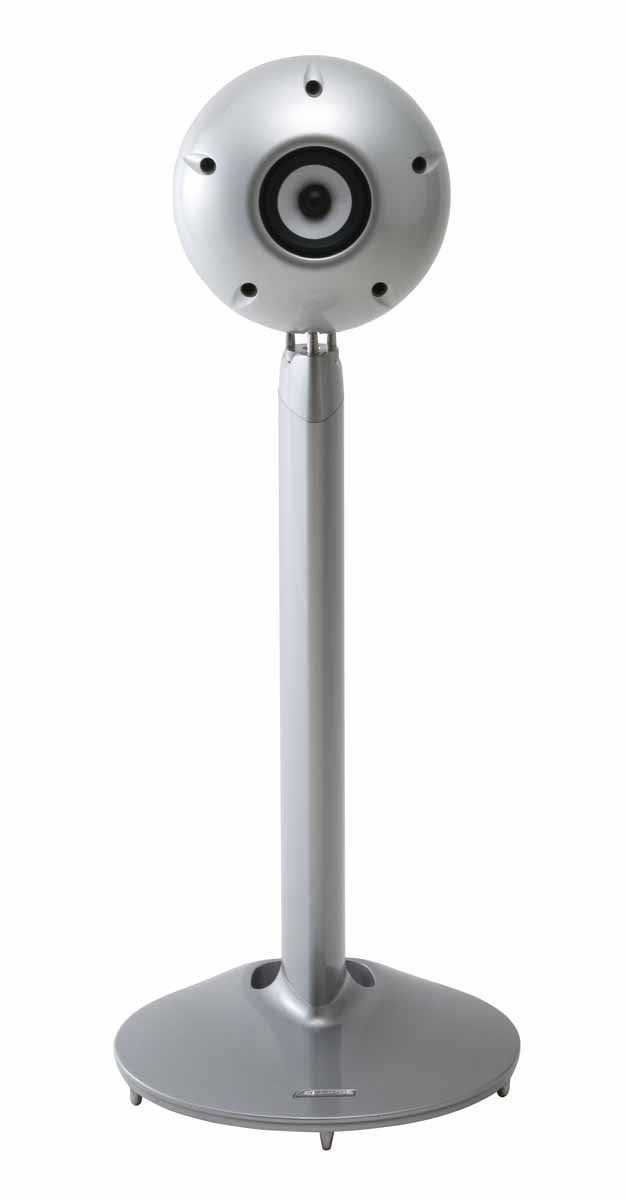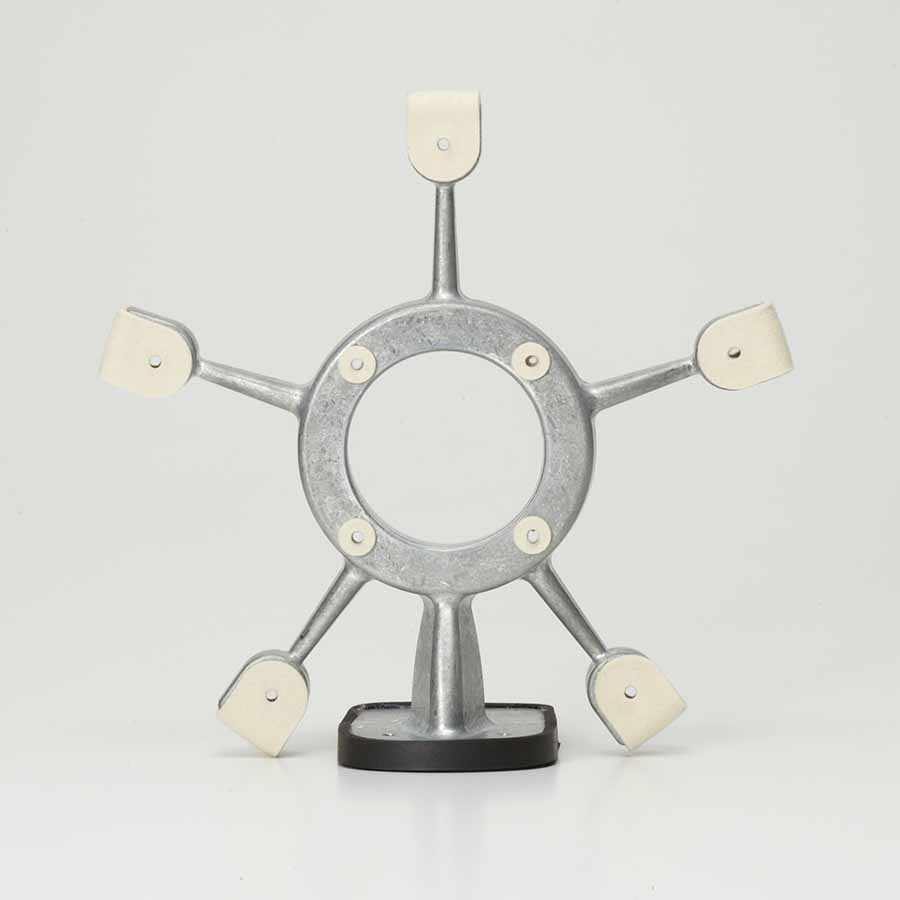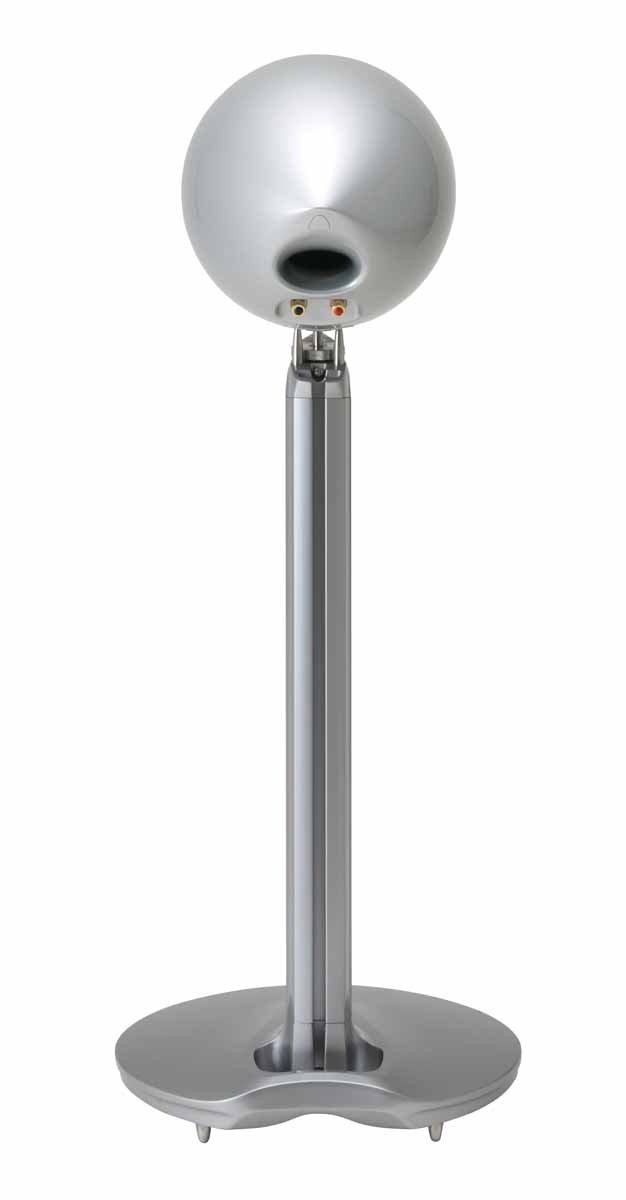Paul Messenger takes a listen to the Eclipse TD510Z Mk2 Loudspeakers with matching stands and costing £3840 a pair.
Eclipse is a Japanese brand. Currently owned by three companies (Fujitsu. Toyota, and Denso), the parent company used to be called Fujitsu Ten, but since late 2017 it has been known as Denso Ten, as a result of Denso (a major name in automotive OEM technology) purchasing Fujitsu’s controlling interest in the operation.
Irrespective of the change in ownership, Eclipse still operates in a way that’s similar to before, and the models have been around for some fifteen years. I remember reviewing earlier models, including what was presumably a Mk1 version of this TD510 some ten years ago.
DESIGN AND CONSTRUCTION
The initials TD stand for Time Domain, and provide the clue that the prime purpose of this design is to create a speaker that accurately reproduces the timing information, which many would argue is the very essence of musical performance. To this end, a solitary ‘full range’ drive unit (the term is used advisedly) covers the whole audio band, using just a single voice coil with no intervening network components. It stands to reason that if the whole of the audio signal is fed to a single, solitary voice-coil, most of the timing at least will necessarily be spot on. (The extra bass output via the port will undergo a modest phase shift.) Regular speakers with more than one drive unit and phase-shifting crossover networks rarely achieve such tight timing.
To operate high into the treble, a solitary drive unit must necessarily have a small, light diaphragm, the example here is actually made from woven glassfibre, and is just 70mm in diameter. However, even with help of a rearward firing port, such a small driver means that bass output is bound to be rather limited. At the same time, the laws of physics dictate that the top end will tend to ‘beam’ quite strongly once the wavelength being reproduced is smaller than the cone diameter, so best results are likely to be found when listening fairly close to the main forward axis.
The TD510ZMk2 is one of a number of Eclipse models, differing largely in the size of the drive unit (and to some extent its associated sensitivity). The ‘510 is second from the top of the range. It has a drive unit that fires through a 10cm diameter orifice, and a sensitivity of a lowish 84dB/W. (There’s also a ‘712 that costs around £1,000 more and uses a 12cm orifice.)
The enclosure is a large egg-shaped affair – a veritable dinosaur of an egg in size terms – and it comes with a matching stand. The price is a quite high £3840/pair, though the stand accounts for half of that sum, as the price without it is just £1,920. (Performance without the stand – ie without a ‘Z’ in the name – is reckoned to be around 80% of a model that uses it.) A +15/-10 degree of angular adjustment allows the speaker to match the seated head height of a listener.
Inherently a strong shape with exceptional distribution capabilities, the port-loaded ‘egg’ is decoupled internally from the drive unit by a 5-leg strut with damped ends. It’s a two-piece casting, high pressure injection moulded in a mineral loaded, fibre-reinforced resin. The internal shape disperses reflections and avoids standing waves; the outside shape somewhat resembles a human head, which should assist speech reproduction.
Furthermore, the ‘egg’ is effectively decoupled mechanically from the vibrations generated by the drive unit, and the drive unit itself is mass- and ultimately stiffness-loaded, via a bracket down through the stand. Any vibrations created by the driver or its mass damper are fed down into the stand independently of any vibrations within the ‘egg’
Blunt ‘spikes’ are used at the top and bottom of the stand: three at the top (clustered closely together), and five well spaced around an almost circular cast alloy base. The stand’s vertical pillar leans forward a little at the top, the front edge is pointed to avoid causing reflections, and grooves at the rear keep one’s cables tidy. Apparently, it has a sand filling that has been specially dried and graded to absorb broad-band vibration. Finish could be silver (as in our examples), white, or a rather more discreet black.
PERFORMANCE
Let’s deal first with the impedance trace, which is around 6ohms through much of the lower midband, rising steadily through the treble region (apart from the zone around the port tuning frequency, at around 57Hz). The load is therefore quite easy to drive, though it is somewhat compromised by a below average sensitivity of around 85dB/W.
One of the neat things about reviewing speakers for a living is that one never stops learning about them – no more so than exploring the output of a single driver speaker like this Eclipse model. I well recall bringing the earlier Eclipse speakers up close, to some advantage. I therefore began my listening to these latest Eclipses ‘up close’ before moving them back to my normal listening locations.
What really impressed me was the simple fact that these small loudspeakers sounded a whole lot better when used ‘up close’, and that the addition of room reflections was entirely negative. In a way, listening to these speakers when they were relatively close to me was halfway towards headphone listening, albeit without all the unpleasantness associated with the need to wear a headset!
I thought it would be interesting to measure the speakers in various locations, and found the results fascinating. Obviously, the bass here is very limited, and the basic driver diameter means that you don’t get anything much below 50Hz. The treble proper, again rather inevitably, does depend very much on the listening axis, giving fine and well-balanced extension provided one is directly on-axis, but a quite rapid roll-off if listening off-axis. Crucially, the 1-2kHz peak observed in the Mk1 seems to have been engineered out of this Mk2 version.
I’m very impressed by a notable lack of coloration from the enclosure, and although the frequency balance requires some care, taking the time to align it carefully can deliver results that are quite magical (above 50Hz, naturally). Imaging is top class, assisted no doubt by the fact that the ‘egg’ shape promotes fine distribution characteristics.
Does the lack of deep bass really matter? Surprisingly little is the true answer. However, those who do miss the bottom octave can always to add a subwoofer (or two) if desired. Sadly, the simple REL T/5is that I borrowed when recently reviewing a small cast-iron JERN speaker had been returned to the manufacturer. Nothing was therefore immediately available, though a number of options do exist, either from Eclipse or others (eg REL, JERN, B&W etc,).
Irrespective of whether or not subwoofers are used (and one quickly adjusts to their absence) this Eclipse speaker delivers a remarkably smooth and well-balanced sound, with outstanding imaging and splendidly tight focus, provided the distance between speaker and listener is relatively short. I must admit to being very impressed, far more so than I had been with the Mk1 version, largely because it no longer sounded distinctly ‘presence forward’.
Out of interest I played my copy of Joni Mitchell’s Hejira, and was surprised to hear some lyrics on Coyote that had not been audible before. While it’s maybe true that the system I’m using has been steadily evolving, and this might explain the extra vocal clarity, the fact that these were audible through such small and essentially simple speakers must say something very positive about their capabilities.
CONCLUSIONS
This is a superb little loudspeaker, which gets much closer to the ideal of handling the whole audio band from a single full-range drive unit than anything I’ve yet encountered. The combination of a single full range driver that has evolved into a relatively smooth and flat transducer, with an egg-shaped enclosure that ensures minimal coloration and first-class distribution, is very encouraging indeed. To get the very best results they should be used ‘close up’, well away from walls and in fairly small rooms, but there’s no avoiding their stunning all round performance.
AT A GLANCE
Build Quality: Excellent build throughout; very stylish too, in its distinctively individual way
Sound Quality: Sounds great within the inevitable limits of a small full-range drive unit. Sounds best when used ‘close up’, to avoid room reflections. Sounds a bit like headphones without the encumbrance of a headset!
Value For Money: Difficult to assess, though it can sound wonderful within certain constraints.
Pros: Magical time-coherence and imaging. Entirely free from box coloration too. Should be used ‘close up’ for best results, which deliver sound like ‘headphones without a headset’.
Cons: Limited bass extension (though subwoofers can be used). Treble tends to ‘beam’, so one needs to be precisely ‘on axis; for best results
Price: £3,840/pair
Paul Messenger
Manufacturer’s Specifications
Model:TD510ZMk2
Drive unit: 10cm full-range
Cone material: Fibreglass
Frequency response (-10dB): 42Hz – 22kHz
Sensitivity (efficiency): 84dB/W
Impedance: 6ohms
Vertical angle adjustment: –10, +15 degrees
Total size (WxHxD): 384x978x393mm(speaker): 255x255x381mm (stand): 384x367x738mm
Total weight (speaker/stand): 19.5kg (8.5/11kg)






















































































































































































You must be logged in to leave a reply.